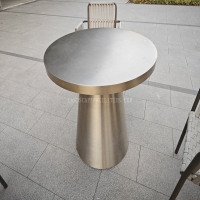Welcome to the website for landscape facilities products and knowledge.
How does the table’s design account for the varying levels of user interaction in different meeting types?
The design of a meeting table plays a crucial role in facilitating effective communication and collaboration, directly addressing the diverse interaction levels required across various meeting formats. In formal board meetings, where hierarchical communication often dominates, tables typically feature elongated rectangular or boat-shaped designs that promote clear sightlines and authoritative positioning. These configurations naturally support presentation-heavy sessions with limited cross-table discussion.
For more dynamic brainstorming sessions, modular tables with rounded edges and reconfigurable components encourage spontaneous movement and equal participation. The absence of sharp corners subconsciously reduces psychological barriers, while integrated power outlets and connectivity ports support seamless digital collaboration. Adjustable height mechanisms further accommodate both seated discussions and standing quick-hites, physically adapting to changing interaction intensities throughout a meeting's duration.
Hybrid meeting environments present particularly complex interaction challenges, which table designs solve through strategically placed monitor arms, camera-friendly sightlines, and acoustic dampening materials. Crescent-shaped tables allow in-person participants to maintain visual contact with remote colleagues while minimizing awkward torso twisting. The subtle angling of table segments creates natural "conversation zones" without physical barriers, maintaining open sightlines crucial for reading body language and gauging engagement levels.
The material selection equally influences interaction dynamics. Light-colored wooden surfaces tend to create warmer, more democratic environments conducive to open dialogue, while glass tables often formalize the atmosphere, subconsciously moderating participation frequency. The incorporation of writable surfaces directly into table tops transforms passive listeners into active contributors, with the physical act of writing or sketching helping to equalize participation between vocal and reserved team members.
Modern table designs increasingly incorporate behavioral analytics through subtle sensors that track engagement patterns, allowing organizations to quantitatively assess how table configurations affect participation equality. This data-driven approach enables continuous refinement of workspace designs to match an organization's specific communication culture and meeting objectives, creating environments that naturally enhance both the quality and inclusivity of collaborative sessions.
Related search:

Recommendation
Outdoor Metal Table - Classic Outdoor Furniture, Stainless Steel Table, Durable and Reliable